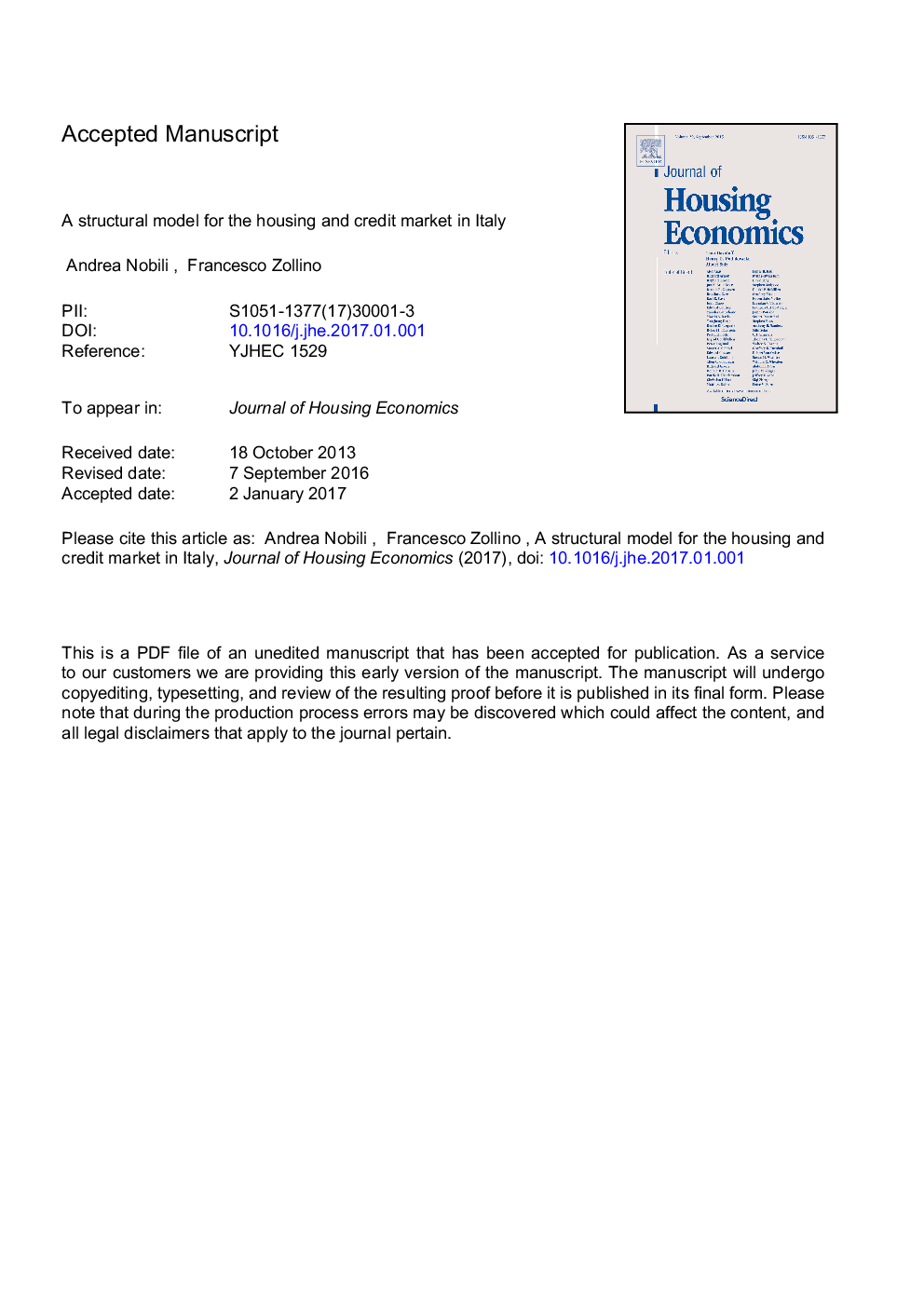| Article ID | Journal | Published Year | Pages | File Type |
|---|---|---|---|---|
| 5100853 | Journal of Housing Economics | 2017 | 26 Pages |
Abstract
In this paper we estimate a fully-fledged structural system for the housing market in Italy, taking into account the multi-fold link with bank lending to both households and construction firms. The model allows the house supply to vary in the short-run and the banking sector to affect the equilibrium in the housing market, through its effect on housing supply and demand. We show that house prices react mostly to standard drivers such as, disposable income and demographic pressures. Lending conditions also exert a significant impact, especially through their effects on mortgage loans, and consequently on housing demand. Allowing short-run adjustment in house supply implies a weaker response of house prices to a change in monetary policy or in banks' deleveraging process. Finally, we find that since the mid-80s house price developments in Italy have been broadly in line with fundamentals; during the global financial crisis, the worsening in credit supply conditions dampened house price dynamics, partly offsetting the positive stimulus provided by the loosing monetary policy stance.
Keywords
Related Topics
Social Sciences and Humanities
Economics, Econometrics and Finance
Economics and Econometrics
Authors
Andrea Nobili, Francesco Zollino,
